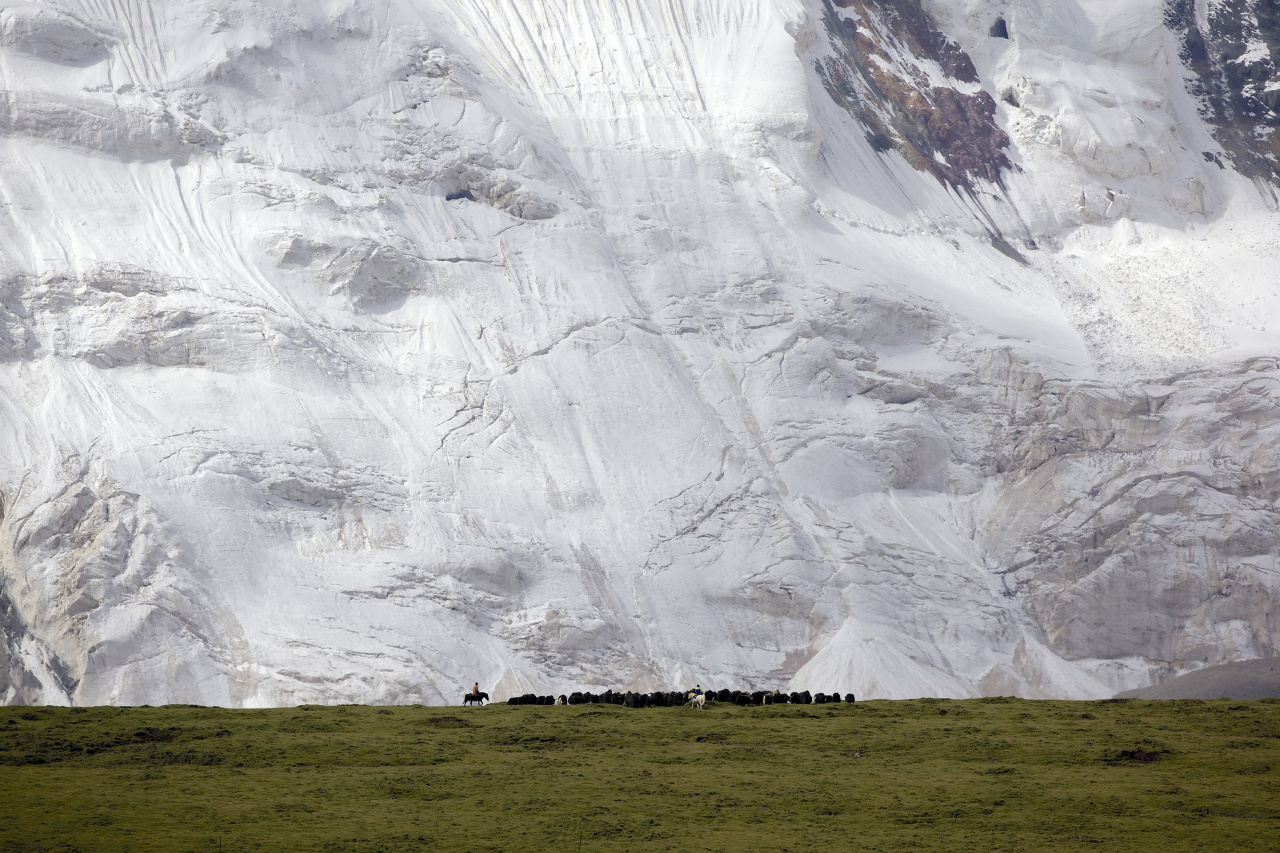
The Third Pole




Tibetan identity is rooted in the land and the herding of yak. Traditionally, nomadic pastoralism in Tibet would have involved moving with a tent, but nowadays herders almost exclusively live between a permanent winter home and a summer tent. Now, ecological resettlement is producing a generation of educated but rurally displaced Tibetans in search of a new identity.
‘The yak is intimately associated with the whole of religion and culture of this region,’ says Gerald Weiner, a UK-based animal geneticist who co-authored ‘The Yak’ for the UN. ‘Yak are the most wonderful animals for sustaining life in the region – they provide milk for butter, yoghurt and cheese and are a source of meat and hair for weaving into tents and rope, with the finer fabric made into clothing.’
Cai Li, a Chinese professor and yak history expert from Chengdu in Sichuan province, was of the opinion that without yak dung, the only fuel available, no people or civilisation could have colonised these vast mountainous regions.
Today, motorbikes and smart phones are essential tools for the modern nomad, but yak herding remains at the heart of Tibetan identity. The resettlement of nearly all of Qinghai’s nomads will fundamentally redefine Tibetan cultural identity forever.
‘Nomads have started thinking the grass in greener in the city!’ explains former nomad and conservationist Tsera. ‘Grassland life is a lot of hard work . But here [in town] they have no job, no money, and they have an identity crisis. They always ask me “what shall I do?” At first people think it’s a good choice, but after a while they realise they have to buy meat and yak dung, pay to build a toilet and don’t have enough money to move back.’





‘Education will ruin our culture,’ laments Dojie, a local Tibetan teacher describing how compulsory education is driving the resettlement of nomads. ‘These lifestyles are endangered. You rarely see people on horseback nowadays. Improving living standards depends on education, but saving [culture] depends on the people.’
In Dojie’s classroom the children settle down to read English and Tibetan. Outside, the sounds of drills and trucks remind us that the school is a work in progress as the authorities desperately try to make space for the flood of new pupils. Tibetan motifs adorn freshly painted walls, while children shriek through unfinished corridors due to chronic understaffing.
‘There is no need to be nostalgic for a past time,’ says Dojie, himself a product of voluntary resettlement. ‘Every individual has the ability to do something to save traditional culture. I think it will change, yes. There will be fewer people in five years and even less pastoralism in ten years, but the Earth needs people to take care of it, it can’t be deserted.’


Horse festivals on the plains near Yushu town are resurgent in popularity, despite government restricting large gatherings in the province. Nearby resettlement villages have their own regular races between locals, perhaps as a reaction to their new settled life.
‘No culture is a museum piece,’ says conservationist Dr Marc Foggin of NGO Plateau Perspectives, which works with nomads to sustain livelihoods and conserve local wildlife. ‘Tibetan pastoralism will continue to create and recreate itself. There is a creativity in us that has allowed humans to survive in harsh habitats.’
Ancient lifestyles become ancient, he reasons, by surviving and evolving to a changeable environment. For millennia the nomads have looked for their survival to the wildlife and continue to do so today.
The Three-Rivers reserve is a haven for rare wildlife, including snow leopard, Tibetan antelope and black-necked cranes. Government-funded roads can allow herding cooperatives to transport their products to the lucrative eastern markets while bringing in ecotourists seeking a wilderness experience epitomised by the nomadic Tibetans.
Of the world’s snow leopards, half live on the Tibetan plateau, and China wants to protect them. Nomads working as wildlife monitors can gather scientific data and deter poachers, while remaining on the land. In 2012, authorities announced paid positions for nearly 10,000 ‘keepers of the grassland’, an official endorsement of the value of herders. The wild yak and plateau wildlife now offer a means for the continued survival of Tibetan culture in this harsh landscape.










Children begin their first term at a rural school in Qinghai with military exercises on nearby grasslands, but many will graduate unable or unwilling to return to these ancestral pasturelands. Families are provided with a new home and living subsidy to bring their children to town for education, and few return to the old ways.
‘Life is perfect,’ says a taxi-driver father of five, who was resettled last year. Superficially his new home resembles idyllic suburban life, albeit without running water or power for street lights. His village is used for official visits to showcase the success of ecological resettlement and is more attractive than the most common concrete grids. ‘I like the government. I never went to school, but I hope [my children] may go to university one day.’
The resettlement villages are branded ‘thief schools’ or ‘ghettos on the grasslands’ by critics. Despite their high aims of improving education and healthcare, they bring inner-city problems to the rural landscape. Some find new opportunities there, but 70 per cent of resettled Tibetans remain unemployed, relying on government handouts, feeling hopeless and even suffering culture shock.







Pastoralism may now be a fringe lifestyle, but in fact it always has been so, a scrabble for life in the harshest liveable environment on Earth. Under the torrent flow of China’s economy, drive for urbanisation and the policy of compulsory education, the end of Tibet’s nomads may seem inevitable. Yet herding remains the plateau’s most sustainable lifestyle, and nomads are best placed to conserve the wildlife and land, offering a slender hope of survival against overwhelming odds.













